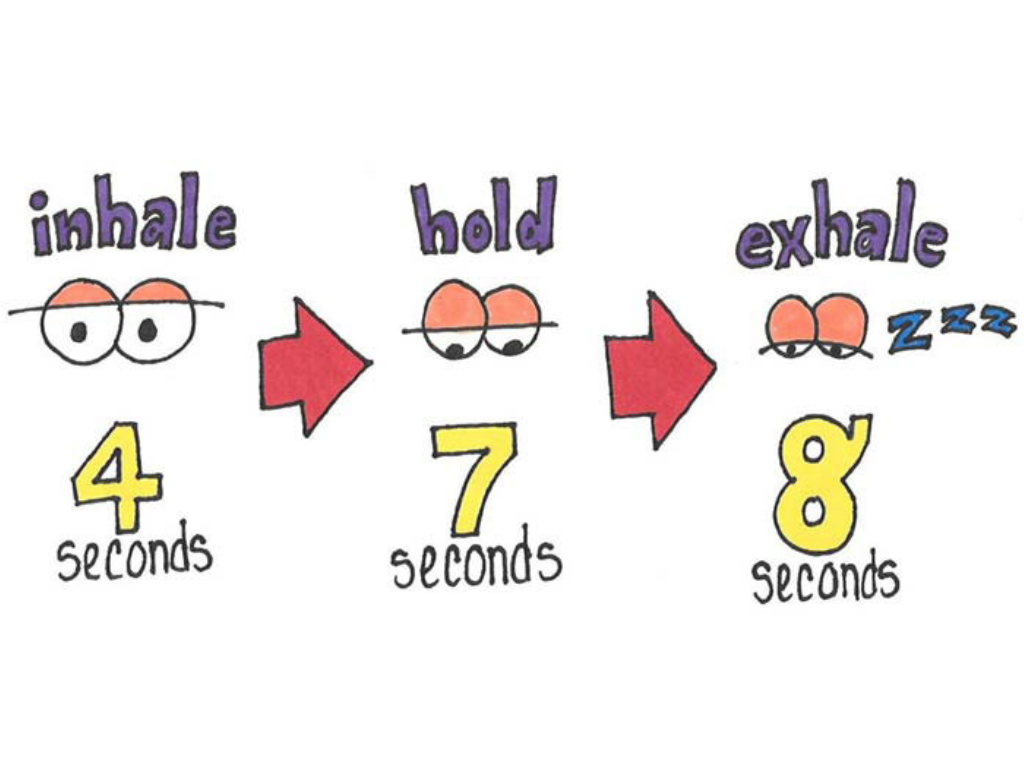Ever wondered why some people mention feeling dizzy or lightheaded with that calming 4-7-8 breathing trick? Let’s journey together to uncover what’s behind those sensations—so you can use this breathwork safely and confidently.
A Quiet Evening & a Sudden Head Rush
Picture this.
You’re winding down after a long day—maybe after handling work assignments, household chores, or caring for family. You decide to try the famous 4-7-8 breathing technique: inhale for 4 seconds, hold for 7, exhale for 8. After a few cycles, you feel relaxed… and then suddenly a bit dizzy. You pause, wondering: “Is this normal? Am I doing something wrong?”
Good news: You’re not alone, and generally, there’s nothing to worry about. Let’s explore what’s really happening and how to handle it.
What Exactly is the 4-7-8 Breathing Rule?
If you’ve ever had a racing mind at night, struggled to focus after office stress, or felt tense without knowing why—4-7-8 breathing can be a game-changer.
It’s also called the “relaxing breath” technique, popularized by Dr. Andrew Weil, and is inspired by pranayama (ancient Indian breathing practice).
The rule is simple, but powerful:
- Inhale for 4 seconds – Slowly breathe in through your nose, letting the air fill your lungs completely.
- Hold your breath for 7 seconds – Keep your lungs full, allowing oxygen to circulate through your body.
- Exhale for 8 seconds – Release the air slowly through your mouth, making a gentle “whoosh” sound, emptying your lungs completely.
💡 One cycle = 4 seconds in, 7 seconds hold, 8 seconds out.
The usual recommendation is 4 cycles at a time, ideally twice a day.
Why It Works So Well
- Activates the parasympathetic nervous system – The “rest and digest” mode, which calms the body.
- Lowers heart rate & blood pressure – Helping you feel more grounded.
- Reduces stress hormones – Making you feel lighter and less anxious.
- Promotes better sleep – Especially useful before bedtime.
Many Indian households already use slow-breathing techniques during prayer or meditation—4-7-8 breathing works on the same principle but with a modern, structured rhythm.
The Flip Side: Side Affects You Should Know
While 4-7-8 breathing is safe for most people, it can cause some temporary sensations—especially if you’re a beginner or practice it incorrectly.
1. Light-headedness or Dizziness
When you breathe deeply and slowly, you change the balance of oxygen and carbon dioxide in your blood. This can cause:
- A slight “floating” feeling
- Mild dizziness
- A short head rush
💡 Tip: Sit or lie down when starting. Avoid practicing while standing or walking.
2. Tingling Sensations
Some people report a slight tingling in the face, hands, or feet. This is due to increased oxygen supply and changes in blood circulation.
3. Shortness of Breath or Tightness
Holding your breath for 7 seconds can feel unnatural, especially if your lung capacity is low. This isn’t harmful but can be uncomfortable in the beginning.
💡 Tip: If it feels too hard, try a gentler ratio like 3-5-6 before moving to 4-7-8.
4. Sleepiness or Fatigue
Since 4-7-8 breathing relaxes your nervous system, it can make you sleepy. This is great before bed, but avoid doing it if you need to stay alert—like at work, while cooking, or driving.
5. Not Ideal for Certain Health Conditions
People with:
- Severe asthma
- COPD (Chronic Obstructive Pulmonary Disease)
- Heart conditions
- Low blood pressure
…should check with a doctor before practicing, as the breath-holding phase may cause discomfort.
How to Practice Safely (Beginner-Friendly Plan)
1. Find a Quiet Spot
Sit in a comfortable chair or lie down on your bed.
2. Rest Your Hands
Place them on your lap or stomach to feel your breath movement.
3. Start Slow
Begin with 2–3 cycles instead of 4.
4. Breathe Naturally If Needed
If you feel dizzy, pause and breathe normally until it passes.
5. Be Consistent
Daily practice—morning and evening—brings the best results.
Why The Life TrackR Recommends Awareness Over Perfection
At The Life TrackR, we believe wellness habits should be realistic for your lifestyle. The 4-7-8 breathing method is simple, free, and effective—but understanding your body’s signals makes all the difference.
When practiced mindfully, it can:
- Calm the mind after a hectic office day
- Reduce tension after family responsibilities
- Help you sleep faster without screens or medication
Conclusion
The side effects of 4-7-8 breathing method – are there risks?
Yes—but they’re generally mild and temporary. A little dizziness, tingling, or sleepiness is common in the beginning. With gradual practice and awareness, these effects usually fade, leaving you with a powerful tool to manage stress and sleep better.
Remember—like any good habit, it works best when you make it your own. Start slow, listen to your body, and let your breath be your anchor.
#478Breathing #BreathingExercises #SideEffectsOf478Breathing #Breathwork #MindfulBreathing #StressRelief #RelaxingBreath #Pranayama #BetterSleep #CalmMind #SleepTips #AnxietyRelief
Editor’s Note: This article was originally published here https://thelifetrackr.com/strong-people-ask-for-help-why-seeking-support-https://thelifetrackr.com/curious-about-the-side-effects-of-4-7-8-breathing-method-are-there-risks/ by @Kairav and @krutika
